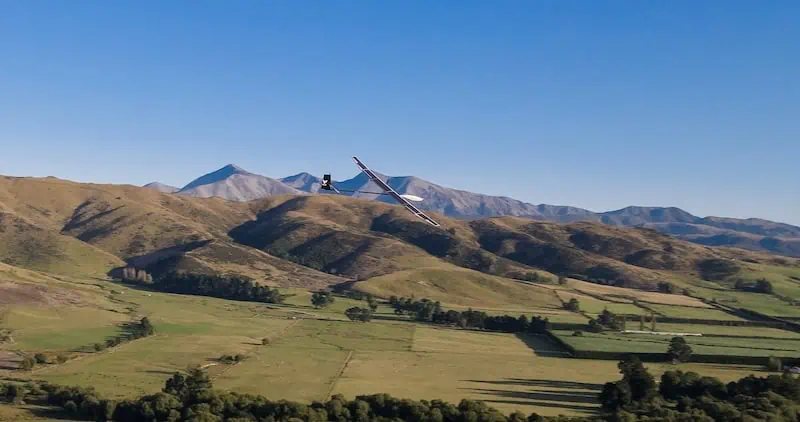
Kea Aerospace has confirmed that it has commenced flight testing with its Kea Atmos Mk 1 UAV (unmanned aerial vehicle). The Atmos, which is New Zealand’s first solar-powered stratospheric aircraft, is designed to collect high-resolution aerial data for applications such as extreme weather events, environmental monitoring and precision agriculture.
The stratospheric UAV has a wingspan of 12.5 metres, weighs under 40 kilograms and will fly at altitudes far higher than commercial airliners. Depending on the location and time of year, the stratosphere in New Zealand typically starts at around 14 kilometres altitude.
Kea Aerospace has been building and flying a range of electric-powered aircraft and high-altitude balloons as part of its program to build a global fleet of solar-powered uncrewed aircraft that will fly in the stratosphere for months at a time. Their X10 aircraft flew in February 2022 for 36 hours non-stop and proved perpetual flight capability at low altitudes. Each aircraft will carry a suite of aerial imagery equipment offering game-changing advances for many industries, vastly improving the data available for activities including environmental monitoring, precision agriculture, disaster management and maritime awareness.
Kea Aerospace is based in Christchurch, New Zealand. High altitude flights are planned this year to take-off from Tāwhaki, on the Kaitorete Spit, located around 50 kilometres south of Christchurch.
Mark Rocket, CEO of Kea Aerospace, commented: “This has been a tremendous effort by the team to design and build this aircraft, it’s an exciting time now that we’ve kicked-off our flight testing campaign. We’ve started with flying low altitude tests and are planning to steadily build up to stratospheric altitudes this year.”
“The Kea Atmos is the first solar-powered stratospheric aircraft designed and built in the Southern Hemisphere. It’s an incredible challenge to make the aircraft as lightweight as possible to fly in less than 10% of the air density we have at sea level, but at the same time it has to be tough enough to handle flying through the fast jet streams.”


















